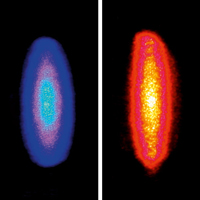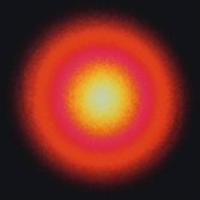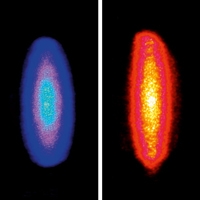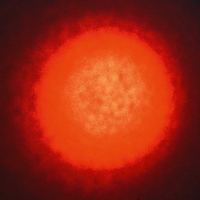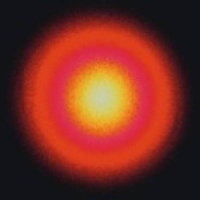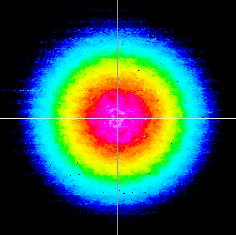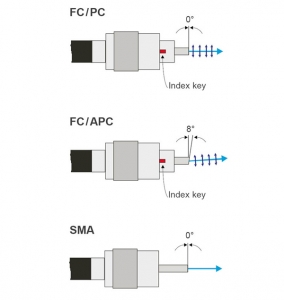Laser Combiners and Fiber Coupling
Fiber Coupling
A Coupling Solution for Any Laser
- Available for all collimated free beam laser sources from PicoQuant (except below 350 nm)
- Various fiber types: multi-mode, single mode and polarization maintaining single mode
- Various input and output connectors: FC/APC, FC/PC, SMA, High Power Fiber End-caps, others on request
- Typ. 40–60 % coupling efficiency in (polarization maintaining) single mode fibers
- Typ. 80 % coupling efficiency in multi-mode fibers
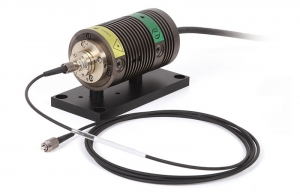 Most laser sources from PicoQuant provide a collimated output beam1, including laser heads from the LDH, LDH-FA, and LDH-IX series as well as the high-powered VisIR and VisUV laser modules. All of these laser soources can be optionally coupled into a variety of optical fibers (such as multi-mode, single mode, or polarization maintaining single mode) via different connector types. We recommend FC/APC connectors for most applications, since they prevent back reflections that can interfere with laser stability.
Most laser sources from PicoQuant provide a collimated output beam1, including laser heads from the LDH, LDH-FA, and LDH-IX series as well as the high-powered VisIR and VisUV laser modules. All of these laser soources can be optionally coupled into a variety of optical fibers (such as multi-mode, single mode, or polarization maintaining single mode) via different connector types. We recommend FC/APC connectors for most applications, since they prevent back reflections that can interfere with laser stability.
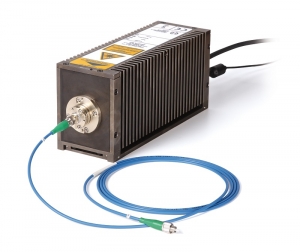 Why fiber coupling?
Why fiber coupling?
Coupling the laser beam into a fiber is useful to transport the beam light in a safe manner. But besides the prosaic function of light transportation, fiber coupling has the added benefit of improving the beam quality. For example, the typically elliptical beam shape of a collimated laser diode gets circularized into a round beam at the output of the fiber. Furthermore, coupling the light beam into a single mode fiber or a polarization maintaining single mode fiber even permits to filter out all side modes of the diode in order to obtain a not only circular but also near TEMoo, gaussian distribution of the beam profile. In fact, for confocal micoscopy setups, the coupling of a laser diode head into a polarization maintaining single mode fiber is nearly a must.
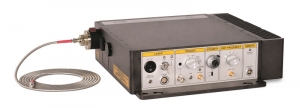 Coupling efficiency
Coupling efficiency
Note that fiber coupling does always lead to a loss in optical output power. The typical coupling efficiencies for elliptical laser diode beam shapes is 40 % for single mode and 80 % for multi-mode. The typical coupling efficiencies for fiber amplified laser beam shapes is 60% for single mode and 80 % for multi-mode in the visible/NIR range. At 355 nm the coupling efficiency in a single mode is typically of 50 %. Below 350 nm no fiber coupling is offered at the moment.
An optional collimator at the fiber output can also be provided upon request.
1 Except for a few butterfly-diode-based laser heads where a FC/APC receptacle is used as output (e.g., LDH-P-F-1030, CPDL-S-F-1060). Some lasers do come with a fixed output fiber by default such as the LDH-P-FA-530B.
| Possible fiber types | Typical coupling efficiency (LDH/LDH-I)1 |
Typical coupling efficiency (LDH-FA/VisUV/VisIR) |
Typical coupling efficiency (Prima) |
|---|---|---|---|
| Single mode fiber | > 40 % | > 60 % | > 30 % for 2 wavelengths |
| Polarization maintining single mode fiber | > 40 % | > 60 % | > 30 % for 2 wavelengths |
| Multi-mode fiber | > 80 % | > 80 % | > 70 % for all 3 wavelengths |
| at 355 nm: 50 % for (PM) single mode, 80 % for multi-mode < 350 nm: no fiber coupling! |
1 Different coupling efficiency into optical fibers for pulsed and CW operation due to astigmatism and possible wavelength shift. The coupling is optimized for pulsed operation as standard.
| The fiber amplified sources (LDH-FA, VisUV, VisIR) have mostly circular beam shapes with various beam diameters. |
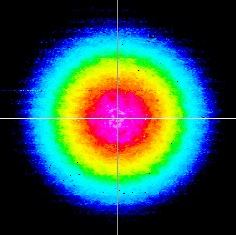 |
Connector types
 FC/APC connectors are recommended for the majority of applications. The end of this fiber is cut by 8°, which minimizes backreflections into the fiber that might interfere with the laser stability. This connector is therefore always used at the laser head and preferably as well at the output of the fiber.
FC/APC connectors are recommended for the majority of applications. The end of this fiber is cut by 8°, which minimizes backreflections into the fiber that might interfere with the laser stability. This connector is therefore always used at the laser head and preferably as well at the output of the fiber.- FC/PC connectors have a flat output end. They might be necessary at the output of the fiber, if it needs to be connected to a device that also has a FC/PC connector. In such cases one should take care that the optical path of a possible back reflected pulse does not match the selelcted pulse period.
- SMA connectors are only suited for multi mode fibers due to their limited fixation accuracy. They have a flat output end.
All Information given here is reliable to our best knowledge. However, no responsibility is assumed for possible inaccuracies or omissions. Specifications and external appearances are subject to change without notice.



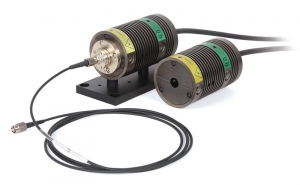
 Contact us
Contact us